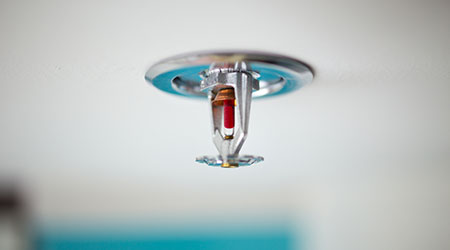Q: With regards to a fire watch, the code is specific about requiring one in an occupied building when a fire alarm system or suppression system is out of service for a prescribed period of time.
This makes sense for head end shutdowns and other scenarios where entire buildings or significant portions of buildings are impacted. My question is what if you are only taking part of a "system" down? Meaning a small renovation that impairs three heads in a room because the ceiling grid and tile are removed for greater than 10 hours. This is not a "system," only a part of one.
Where does an AHJ draw the line? Is it possible that our ILSM and Fire Impairment Policy could allow for a certain number of heads, certain square footage or percentage of a smoke compartment to be impaired without the fire watch requirement (given that other ILSMs are in place)?
A: While the interpretation is not written down as to how many impaired sprinkler heads constitute a system, it is generally understood more than two. While that number may fluctuate between surveyors, it would be fair to say all of the sprinkler heads inside one room that are impaired would require a fire watch. The logic is, if a fire started in the room, there is no fire suppression device to extinguish the fire if all the heads were impaired. Does not matter if the room only has three sprinkler heads.
To be sure, you should obtain a decision directly from your accreditation organization. But even then, the CMS state agency may not agree with what your AO says. It is best to be conservative and conduct the Fire Watch as long as the sprinkler heads are impaired. Besides, how long does it take to install upright heads within 12 inches of the deck in this room?
Brad Keyes, CHSP, is the owner of KEYES Life Safety Compliance, and his expertise is in the management of the Life Safety Program, including the Environment of Care and Emergency Management programs.

 Hand, Foot and Mouth Disease on the Rise
Hand, Foot and Mouth Disease on the Rise Preparing for the Hazards of Winter Weather
Preparing for the Hazards of Winter Weather BayCare Reveals Pagidipati Children's Hospital at St. Joseph's
BayCare Reveals Pagidipati Children's Hospital at St. Joseph's Why Identity Governance Is Becoming a Facilities Management Issue
Why Identity Governance Is Becoming a Facilities Management Issue Habitat Health Opens South Los Angeles PACE Center
Habitat Health Opens South Los Angeles PACE Center